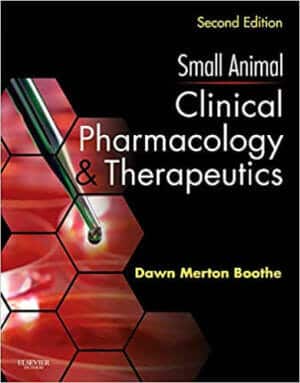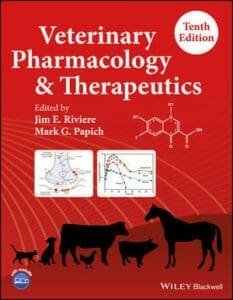Part One: Introduction to Drug Use in Dogs and Cats
Chapter 1: Principles of Drug Therapy
Chapter 2: Factors Affecting Drug Disposition
Chapter 3: Pharmacogenetics
Chapter 4: Drug-Induced Diseases
Chapter 5: Therapeutic Drug Monitoring
Part Two: Drugs Targeting Infections or Infestations
Chapter 6: Principles of Antimicrobial Therapy
Chapter 7: Antimicrobial Drugs
Chapter 8: Treatment of Bacterial Infections
Chapter 9: Treatment of Fungal Infections
Chapter 10: Antiviral Therapy
Chapter 11: Disinfectants, Antiseptics, and Related Biocides
Chapter 12: Drugs for the Treatment of Protozoal Infections
Chapter 13: Drugs for the Treatment of Helminth Infections – Anthelmintics
Part Three: Drugs Targeting Body Systems
Chapter 14: Therapy of Cardiovascular Diseases
Chapter 15: Drugs Acting on Blood or Blood-Forming Organs
Chapter 16: Fluids, Electrolytes, and Acid-Base Therapy
Chapter 17: Drugs Affecting Urine Formation
Chapter 18: Treatment of Urinary Disorders
Chapter 19: Gastrointestinal Pharmacology
Chapter 20: Drugs Affecting the Respiratory System
Chapter 21: Drug Therapy for Endocrinopathies
Chapter 22: Dermatologic Therapy
Chapter 23: Rational Use of Reproductive Hormones
Part Four: Drugs Acting on the Nervous System
Chapter 24: Anesthetic Agents
Chapter 25: Muscle Relaxants
Chapter 26: Drugs that Modify Animal Behavior
Chapter 27: Anticonvulsants and Other Neurologic Therapies
Chapter 28: Pain Control: Locally- and Centrally-Acting Analgesics
Part Five: Drugs Targeting Inflammation or Immunomodulation
Chapter 29: Anti-inflammatory Drugs
Chapter 30: Glucocorticoid and Mineralocorticoids
Chapter 31: Immunomodulators: Introduction and Miscellaneous Agents
Chapter 32: Biologic Response Modifiers: Interferons, Interleukins, Recombinant Products, and Liposomal Products
Chapter 33: Chemotherapy














![Ettinger’s Textbook of Veterinary Internal Medicine 9th Edition [PDF+Videos] Ettinger’s Textbook of Veterinary Internal Medicine 9th Edition [True PDF+Videos]](https://www.vet-ebooks.com/wp-content/uploads/2024/10/ettingers-textbook-of-veterinary-internal-medicine-9th-edition-100x70.jpg)

![Textbook of Veterinary Diagnostic Radiology 8th Edition [PDF+Videos+Quizzes] Thrall’s Textbook of Veterinary Diagnostic Radiology, 8th edition PDF](https://www.vet-ebooks.com/wp-content/uploads/2019/09/textbook-of-veterinary-diagnostic-radiology-8th-edition-100x70.jpg)






